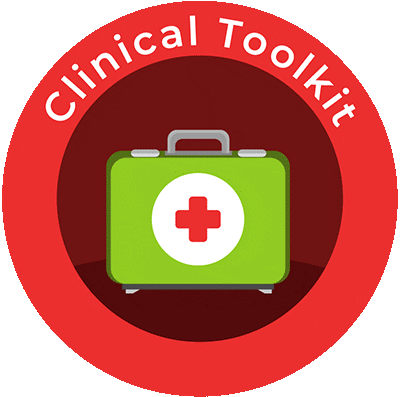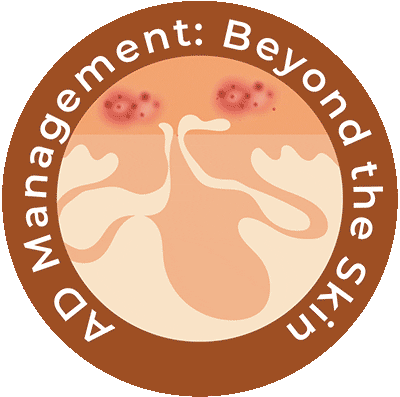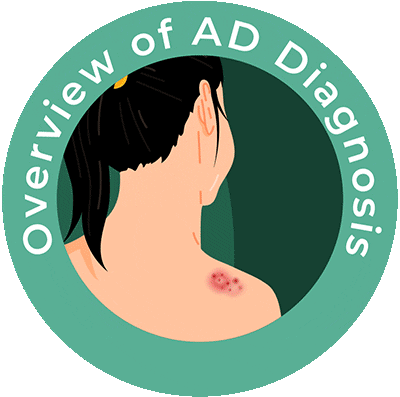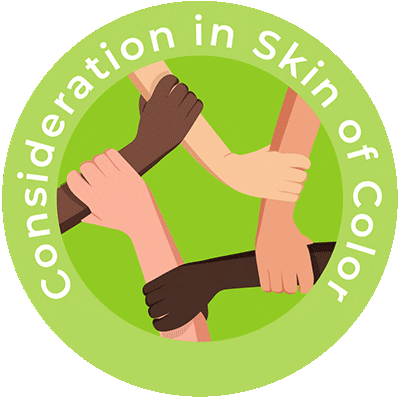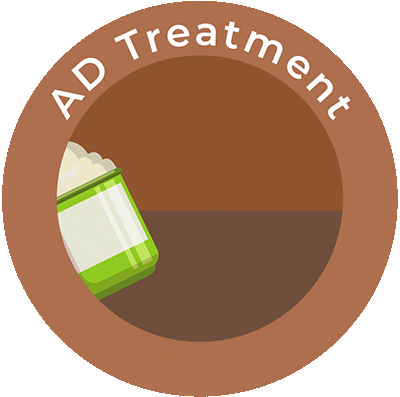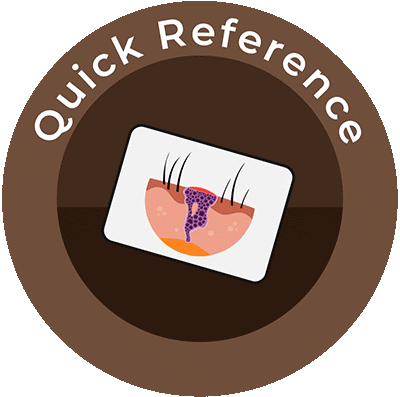Considerations in Skin of Color
Symptoms and Physical Findings
Eczema, also known as atopic dermatitis (AD), affects different ethnicities to varying degrees. For example, eczema seems to be more common in African American populations than with other ethnicities, and it is more severe in African Americans as compared with Americans of European ancestry.1,2 This highlights the importance of personalized management approaches to help minimize disease burden, such as earlier and more aggressive treatment in African American patients.1
Eczema may also differ in appearance across different skin types, sometimes making it harder to recognize.1,2 For instance, lighter skin tones typically exhibit red patches and plaques in areas where the skin folds and touches near a joint (called flexor surfaces), such as inside the elbow or in back of the knee.1,3 Alternatively, redness in darker skin tones may appear more brown, purple, or ashen grey in color.1,2 Eczema in darker skin may also affect areas where skin does not fold with joint movement (called extensor surfaces), such as the forearm or front of the knee, and may have raised bumps and skin thickening (lichenification).1–4
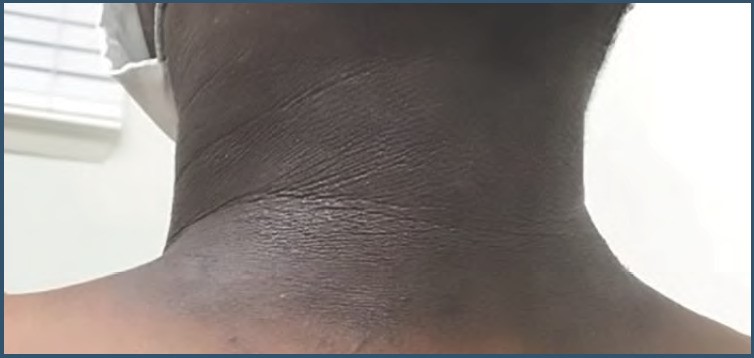
Other distinguishing features of eczema in Black and African patients include the appearance of increased amounts and depth of skin lines on the palms of the hands (hyperlinearity), dark circles around the eyes, crease-like wrinkles under the lower eyelid (Dennie-Morgan lines), and the formation of hard, itchy lumps (prurigo nodularis).1,5–9
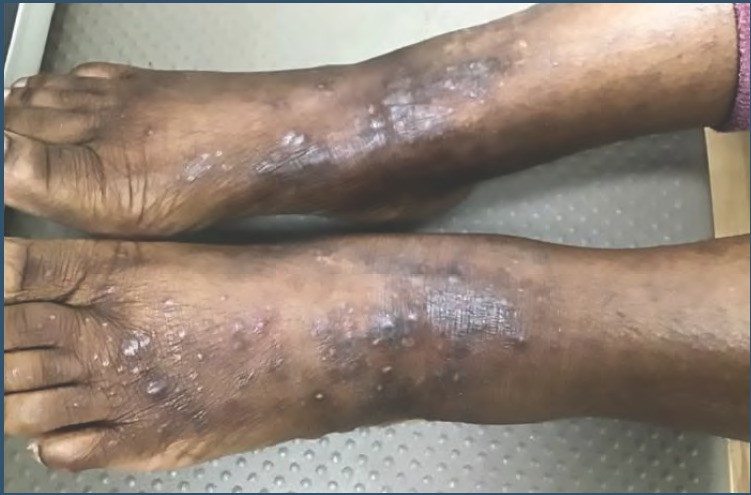
In contrast, eczema in Asian populations often exhibits skin features that resemble psoriasis, including scaliness (parakeratosis), well-defined borders, and lichenification.1,10-13
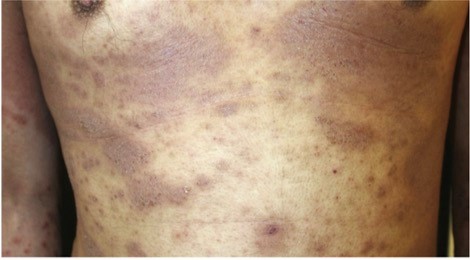
In addition to the ability to promptly recognize the signs of eczema in different skin types, it is also essential to understand how skin pigmentation can be affected after eczema treatment.1 As skin lesions heal, inflammation from eczema can leave behind darker (hyperpigmented) and/or lighter (hypopigmented) changes to the skin.1 Since changes in skin pigmentation may also occur as a potential side effect with certain medications, care should be taken to provide education on the proper use of medications, their side effects, and, when needed, strategies to address changes in skin pigmentation.1
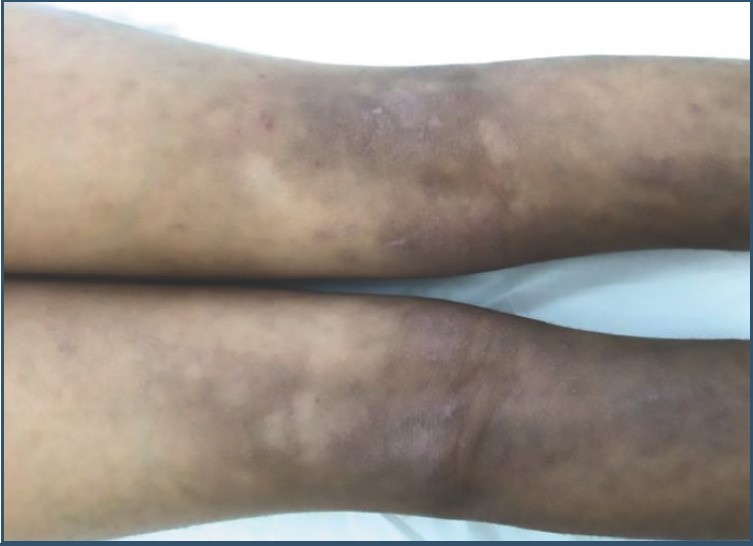
References
- Sangha AM. Dermatological conditions in SKIN OF COLOR-: Managing atopic dermatitis. J Clin Aesthet Dermatol. 2021;14(3 suppl 1):S20-S22. Available at: www.ncbi.nlm.nih.gov/pmc/articles/PMC8211323/
- Kaufman B, Alexis A. Eczema in skin of color: What you need to know. Available at: https://nationaleczema.org/eczema-in-skin-of-color/
- Brannon HL. Skin conditions affecting extensor surfaces. Verywell Health. Updated 9/13/2021. Available at: www.verywellhealth.com/extensor-surface-1069321
- AtopicDermatitis.net. Thickened skin (lichenification) in atopic dermatitis. 2017. Available at: https://atopicdermatitis.net/thickened-skin-lichenification
- MedlinePlus. Hyperlinearity in atopic dermatitis—on the palm. Updated 6/19/2021. Available at: https://medlineplus.gov/ency/imagepages/2391.htm
- Nemeth V, Evans J. Eczema. StatPearls [Internet]. Updated 8/11/2021. Available at: www.ncbi.nlm.nih.gov/books/NBK538209/
- MyMed.com. What are the symptoms and signs of eczema? Available at: https://www.mymed.com/diseases-conditions/eczema-atopic-dermatitis/what-are-the-symptoms-and-signs-of-eczema
- National Institutes of Health (NIH). Genetic and Rare Diseases Information Center (GARD). Prurigo nodularis. Available at: https://rarediseases.info.nih.gov/diseases/7480/prurigo-nodularis
- American Academy of Dermatology Association (AAD). Prurigo nodularis: Signs and symptoms. Updated 9/14/21. Available at: https://www.aad.org/public/diseases/a-z/prurigo-nodularis-symptoms
- Noda S, Suárez-Fariñas M, Ungar B, et al. The Asian atopic dermatitis phenotype combines features of atopic dermatitis and psoriasis with increased TH17 polarization. J Allergy Clin Immunol. 2015;136:1254-1264. Available at: www.jacionline.org/action/showPdf?pii=S0091-6749%2815%2901196-3
- Free dictionary by Farlex. Psoriasiform. 2012. Available at: https://medical-dictionary.thefreedictionary.com/psoriasiform
- Brady SP. Parakeratosis. J Am Acad Dermatol. 2004;50:77-84. Available at: www.jaad.org/article/S0190-9622(03)02801-9/fulltext
- Free dictionary by Farlex. Parakeratosis psoriasiformis. 2009. Available at: https://medical-dictionary.thefreedictionary.com/parakeratosis+psoriasiformis

